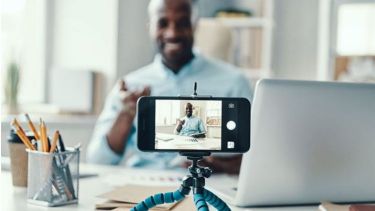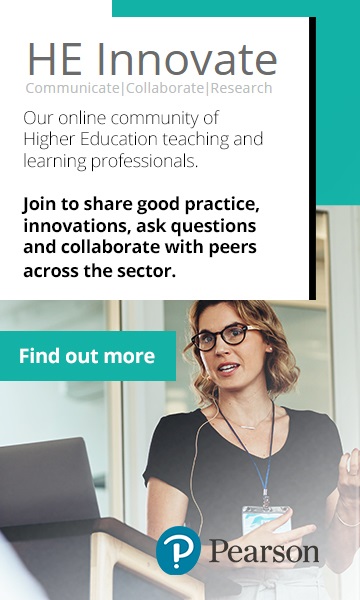
What does ‘immersive’ mean in the context of higher education? What do you think of?
You could be thinking of virtual reality headsets or augmented reality experiences on your smartphone, or even virtual field trips and laboratories. These technologies are great opportunities for learners to be immersed in a realistic replica environment that they may not easily gain access to in the real world.
But not everyone will be able to access these technologies, or they may not be suited to your course content or outcomes.
So how can we create immersive experiences utilising the tools we currently have that are accessible to all our learners?
Authentic experiences
Engaging learners in real-world, authentic activities is one of the best ways to immerse your students. Case-studies or real-life problems work well to simulate the real-life situations they may one day encounter. Here’s some ideas you could try:
- Approach an industry or sector organisation and ask them to share a problem their staff have solved previously and present that problem to your students. The solutions from your students could then be fed back and learners can compare their own approaches with the one taken by the organisation.
- Structured debates or discussions where students are allocated a specific role or perspective. This will encourage students to see the same situation from multiple points of view. Providing personas can also encourage students to be more immersed in the activity.
- Group work and tasks are also an effective way of simulating teamwork situations they would encounter outside the classroom. A problem-solving exercise where they must create a visible output, such as a presentation or a video, can provide a heightened sense of engagement and immersion.
- Assessment should also be authentic and be based in the real world as much as possible. This can be achieved by using real data, problems, debates or connecting with real organisations, adding to the sense of experiential learning and immersion.
Preparing for employment
One of the key aspects of higher education is preparing students for future employment. In the rapidly changing workplace, with constant innovations in skills and tools, it is essential that students are connected to the contemporary practice of their discipline from the very beginning. The use of workplace tools and examples can help students feel more in-tune with how the skills their discipline teaches them can be applied in the real world. Some ways of immersing your students in a more work-based environment could be:
- Utilising work-based situations to conduct activities to prepare them for what will be expected in the workplace. This could include presenting, working to tight and changing deadlines, and collaborating with multiple teams.
- Helping them become familiar with software or tools that are common across many workplaces and industries, such as MS Teams, shared documents, project management tools or presentation software.
- Bring in industry or discipline experts to provide feedback or review their work. This will give them unique and authentic insights, helping establish how their course is preparing them for the real world.
Tell a story with their learning
This might not fit all disciplines or learning outcomes but can be an extremely effective way of immersing students in a task or assessment. Think about some of the more commonly used forms of formative and summative activities, like critically appraising or reflecting on topics or debates, and could storytelling be an effective alternative:
- Ask students to reflect on a topic and tell a story about how it links in with their own experiences. They could approach a reflective piece of work with a more narrative structure, telling the story of their learning.
- Give students a persona, for example a key figure involved in a topic or debate, or an employee who is facing a particular problem, and ask them to tell the story of the problem or topic from the persona’s perspective.
Storytelling can encourage student’s creativity, widen their perspectives, and broaden their communication skills. There is also a positive impact on faculty, as reading the stories can lead to more developed insights than reflective tasks or essays, as well as being a potential welcome change from more typical assessment methods.
Where to start?
These strategies don’t have to require costly new technology or platforms. You can achieve them through the formulation and description of learning activities using your VLE and digital learning tools. For more complex approaches, you may wish to contact your learning technology or IT teams for support, or consult a third-party course design specialist.
Whichever route you decide to take, the key to success is taking the time to consider the activities of a course or module and how closely they can replicate the real-world, so that students can be challenged and immersed in the relevance of their studies.
Are you struggling with creating truly immersive learning experiences for your students?
Pearson supports immersive and authentic learning experiences across a range of products and services. Find out how our course development services can assist you in the creation of immersive and engaging online experiences for your students and get in touch for a consultation.
Author
John Roberts, Online Learning Consultant at Pearson

















